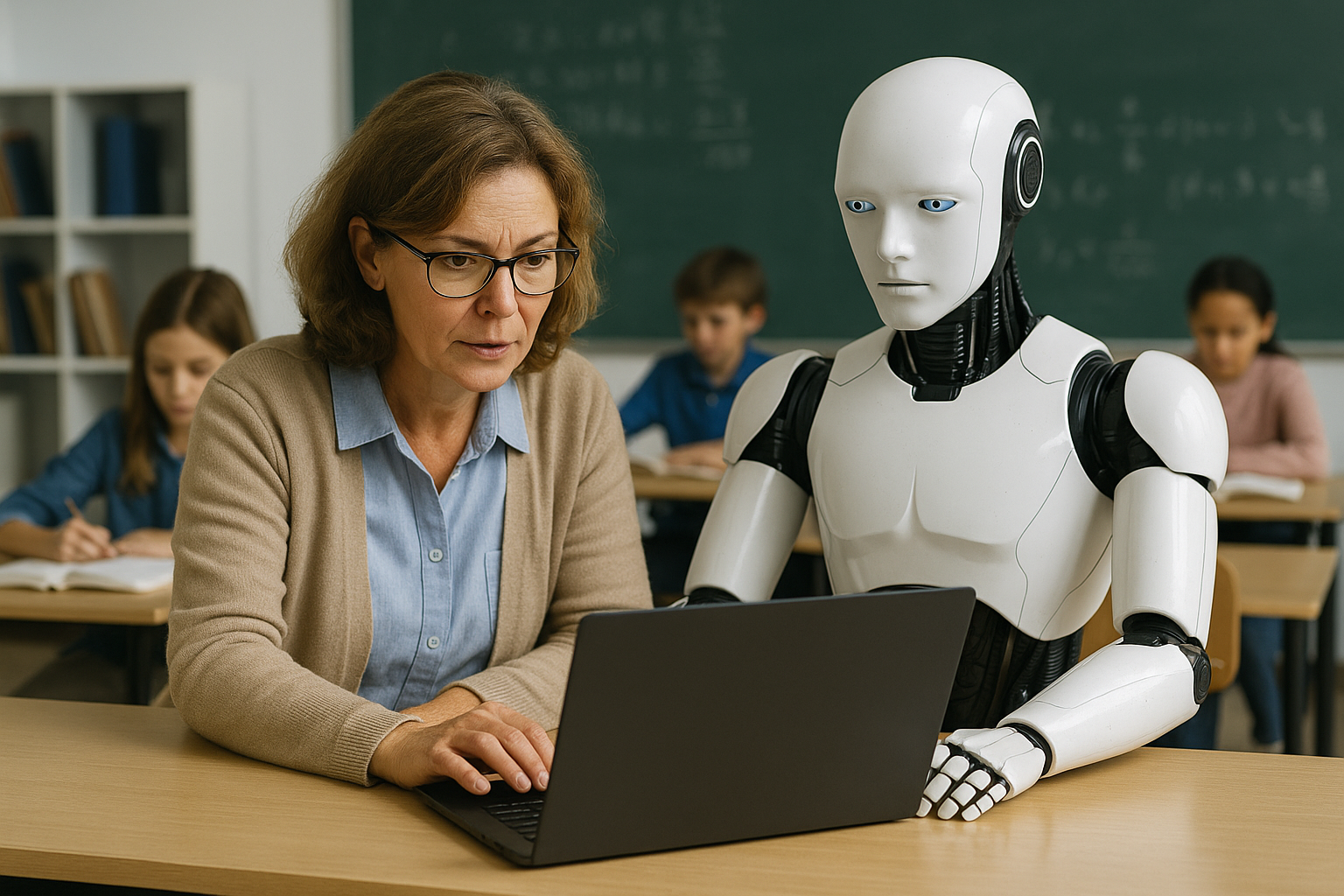AI helps teachers engage more, if they trust and embrace it
Teachers with positive attitudes toward AI tended to exhibit higher levels of teaching engagement. These educators viewed AI not as a threat to their autonomy but as a co-pilot capable of enhancing student feedback, automating routine tasks, and offering real-time performance analytics. Conversely, those harboring skepticism or unease toward AI showed markedly lower engagement levels, often citing job insecurity or a diminished sense of instructional control.

Can collaboration between teachers and artificial intelligence (AI) enhance teaching engagement or does it risk reducing the human role in education? A new study published in Behavioral Sciences, titled “Will Teacher-AI Collaboration Enhance Teaching Engagement?”, offers fresh insight into this question.
The study systematically examines how AI-integrated teaching impacts educators’ enthusiasm, focus, and effectiveness in the classroom and what conditions make these outcomes more likely.
What drives or hinders teacher engagement in AI-enhanced classrooms?
Teaching engagement, a composite of vigor, dedication, and absorption, is widely considered a key factor in educational quality. The study sees AI not as a replacement but as a potential collaborator in the instructional process. It investigates whether AI tools, when used in tandem with teacher expertise, actually heighten engagement or lead to detachment.
The researchers surveyed 347 teachers across China, focusing on three pivotal antecedents: teachers’ attitudes toward AI collaboration, their prior experience with AI technologies, and their perceived utility of AI systems. Their findings reveal that all three significantly shape how willing and able teachers are to engage more deeply with their work in an AI-assisted context.
Teachers with positive attitudes toward AI tended to exhibit higher levels of teaching engagement. These educators viewed AI not as a threat to their autonomy but as a co-pilot capable of enhancing student feedback, automating routine tasks, and offering real-time performance analytics. Conversely, those harboring skepticism or unease toward AI showed markedly lower engagement levels, often citing job insecurity or a diminished sense of instructional control.
Moreover, experience with AI tools emerged as a strong predictor. Educators who had previously worked with intelligent teaching platforms were more likely to integrate them meaningfully into their workflows, leading to improved motivation and classroom attentiveness. In contrast, inexperience bred apprehension, further isolating teachers from available digital resources.
The perceived usefulness of AI in improving learning outcomes also influenced teacher engagement. When educators believed AI contributed to better student comprehension, higher retention, or smoother classroom management, their own motivation surged. If the tools were viewed as ineffective or time-consuming, engagement declined.
How does motivation influence the relationship between AI and engagement?
Beyond initial attitudes and familiarity, the study introduces a critical moderating factor: work motivation. Specifically, it evaluates how two distinct types of motivation, autonomous (driven by personal interest and values) and controlled (driven by pressure or obligation), shape the effects of AI collaboration.
Teachers with high levels of autonomous motivation experienced the strongest gains in teaching engagement when using AI tools. These individuals were intrinsically motivated to explore new teaching methods and felt empowered by AI-enhanced instruction. AI served as an enabler rather than a threat, allowing them to focus on more meaningful educational interactions while automating routine tasks such as grading or data collection.
In contrast, controlled motivation, where actions are driven by external demands or fear of negative consequences, was associated with weaker engagement in AI contexts. When teachers felt compelled to use AI because of institutional mandates or fear of being left behind, their sense of agency was diminished. Rather than collaborating with the technology, they complied with it, leading to disinterest and, in some cases, burnout.
The study confirms that motivation doesn’t merely influence teaching quality in general, it actively mediates how teachers perceive and respond to AI integration. Importantly, even teachers with neutral or slightly negative views on AI collaboration were more likely to become engaged if they were autonomously motivated. This finding underscores the need for professional development programs that not only teach technical skills but also foster intrinsic motivation and pedagogical curiosity.
What are the practical implications for schools and policymakers?
As AI becomes more embedded in learning environments, through intelligent tutoring systems, adaptive testing, and data-driven insights, teacher engagement could be the linchpin determining whether these innovations succeed or stall.
The study recommends three strategic actions to support positive teacher-AI collaboration:
- Invest in training programs that build familiarity and confidence with AI tools. Rather than one-off workshops, sustained mentorship and hands-on simulations can help teachers integrate AI meaningfully into their pedagogy.
- Cultivate a supportive culture that frames AI as a co-teacher rather than a competitor. School leadership must emphasize that AI systems are tools to assist, not replace, educators, helping to reduce resistance and fear.
- Promote intrinsic motivation by involving teachers in AI selection, customization, and implementation decisions. Giving educators a voice in how AI is used affirms their expertise and increases buy-in.
In addition, policymakers are urged to avoid blanket mandates requiring AI usage without first ensuring educators are equipped and willing. While AI can reduce administrative burdens, it must be deployed in a way that preserves human agency and professional fulfillment.
The study also suggests that future AI development should prioritize user-friendly interfaces, transparency, and feedback loops that empower rather than overwhelm teachers. Technology that adapts to educator needs, not just student outcomes, will be more sustainable and impactful.
- FIRST PUBLISHED IN:
- Devdiscourse










